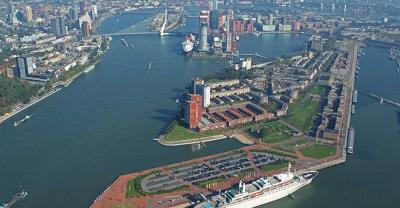As the Port of Rotterdam begins its digital transformation, sensors are being installed across 42-kilometers of land and sea - spanning from the City of Rotterdam into the North Sea - along the Port’s quay walls, mooring posts and roads.
These sensors will gather multiple data streams including water and weather data about tides and currents, temperature, wind speed and direction, water levels, berth availability and visibility.
The initiative will also prepare the Port of Rotterdam’s entire 42-kilometer site to host connected ships in the future. It begins with the development of a centralized dashboard application that will collect and process real-time water weather sensor data and communications data, analyzed by IBM IoT technologies. This will enable a new wave of safer and more efficient traffic management at the port.
"Here in Rotterdam, we are taking action to become the smartest port in the world," says Paul Smits, CFO of the Port of Rotterdam Authority. "Speed and efficiency are essential to our business and requires us to use all of the data available to us. Thanks to real-time information about infrastructure, water, air, etc., we can enormously improve the service we provide to everyone who uses the port and prepare to embrace the connected, autonomous shipping of the future."
This data will be turned into information that the Port of Rotterdam can use to make decisions that reduce wait times, determine optimal times for ships to dock, load and unload, and enable more ships into the available space. For example, the Port of Rotterdam will now be able to predict the best time based on water level, to have a ship arrive and depart Rotterdam, ensuring that the maximum amount of cargo is loaded on board.
Also part of a multi-partner initiative, IBM cognitive IoT technology is being infused into a production process, which uses a robotic welding arm to apply high-quality metal layer-by-layer to create ship components such as propellers, on-demand and faster than ever before – from six to eight weeks to just 200 hours.
With the new initiative, Port of Rotterdam operators will also be able to view the operations of all the different parties at the same time, making that process more efficient. In fact, shipping companies and the port stand to save up to one hour in berthing time which can amount to about $80,000 US dollars in savings.
Other measures that will be installed are digital dolphins, which smart quay walls and sensor-equipped buoys. They will provide insights on the condition and utilization of a berthing terminal and the surrounding water and weather conditions, enabling port operators to identify the optimal time for ships to dock, and where and when they can do so.
Source: MaterialsHandling & Logistics || February 2, 2018 |||

